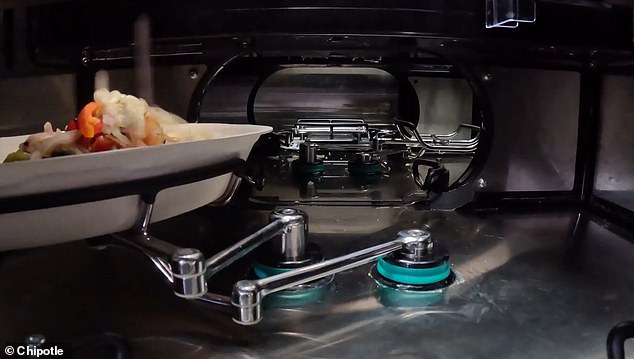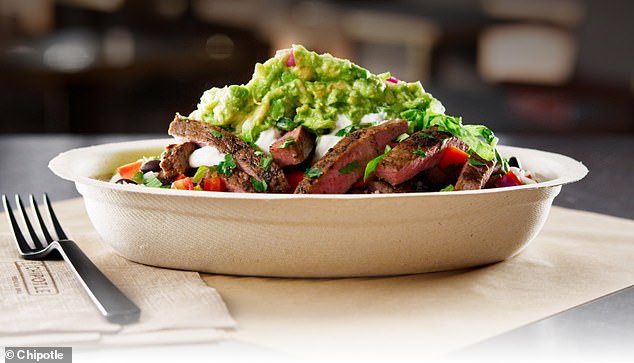Chipotle has found a clever way to beat California’s $20-an-hour wages – and it is not good news for staff
Chipotle has introduced two robots that can take over tasks normally performed by employees.
The ‘autocado’ can peel, pit and slice an avocado for guacamole in 26 seconds, while a ‘digital makeline’ portions salads and bowls based on orders in the app.
The machines are part of an automation program that Chipotle executives hope will reduce the number of workers needed and dramatically cut rising labor costs.
It is therefore no surprise that they will be deployed first in two restaurants of the Mexican chain in California, the company announced on Monday.
Recently, the minimum wage for fast food workers in the state increased to $20 an hour.
Chipotle’s avocado processing robot has been moved from test sites to restaurants
The controversial pay hike — $4 more than the state minimum wage for any other job — was rolled out by California Governor Gavin Newsom to chains with more than 60 locations across the U.S. and went into effect April 1.
Chains like Burger King have already begun rolling out digital ordering kiosks to reduce the number of cashiers in California restaurants.
It’s not yet clear how the production costs of Chipotle’s new machines will compare to the human labor involved in making Chipotle menu items.
It is also not yet clear how many items the digital assembly line can produce per hour in relation to the workforce.
However, Chipotle argued that using the machines wasn’t just about “efficiency” but also about the consistency of menu items.
In July, the company, which has nearly 3,400 locations in the U.S., admitted that widespread customer complaints about varying portion sizes between stores were justified.
With two in three of the chain’s orders being salads and bowls, executives believe the digital makeover could save staff significantly more time.
Questions have been raised before about the security of the digital makeline during the testing phase.
A promotional video released last year showed chopped ingredients jumping out of the bowls in the machine, which some saw as a potential hazard.
“Our food safety and operations teams worked closely with our technology teams to ensure that the design takes into account issues such as cleanliness, speed and accuracy,” CEO Brian Niccol said during an earnings presentation in July.
‘There are a lot of things happening at home to make us more effective in terms of cooking and preparation, which allows us to be consistently successful.’

The makeline has also been introduced in two restaurants in California

According to Chipotle, the machines provide greater efficiency and “consistency” in meal size
The Mexican chain said feedback from staff and customers will determine whether the new machines are rolled out to more restaurants.
Chipotle is betting big on technological advancements, investing $100 million in its Cultivate Next fund.
The fund provides money to partner companies to develop machines that it hopes can be used on a large scale in restaurants or the supply chain.
Chipotle’s revenue beat Wall Street expectations this year, thanks to price increases and a growing number of loyal customers.
But the company has been criticized for its varying portion sizes.
It brought then-Chipotle CEO Brian Nicol – who has since moved to Starbucks – denies giving orders staff to skimp on portions He announced that the company will implement changes to ensure satisfaction.
He revealed that Chipotle will retrain its staff to ensure consistently “generous portions” are served in all of its 3,500-plus stores.
Last month, Wells Fargo analyst Zachary Fadem and his team tested the theory that Chipotle is skimping on its typically large portions after a series of videos posted to TikTok showed employees barely filling their burritos.
The team ordered and weighed 75 bowls — all containing the same ingredients — from eight locations in New York City.
They found that the consistency of the burrito bowls varied widely from restaurant to restaurant, with some locations serving bowls that were up to 33 percent heavier than others, the study found.
